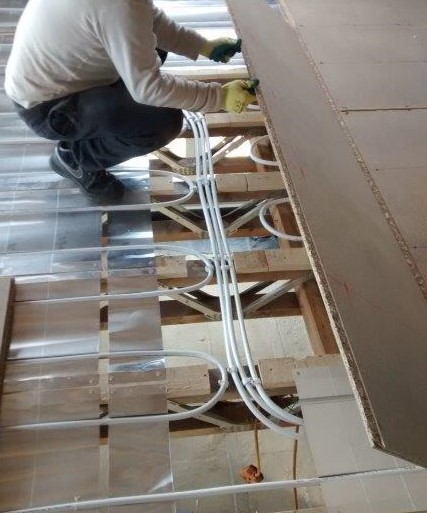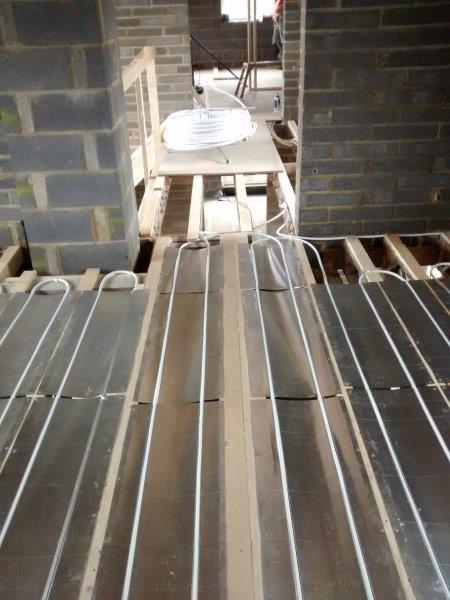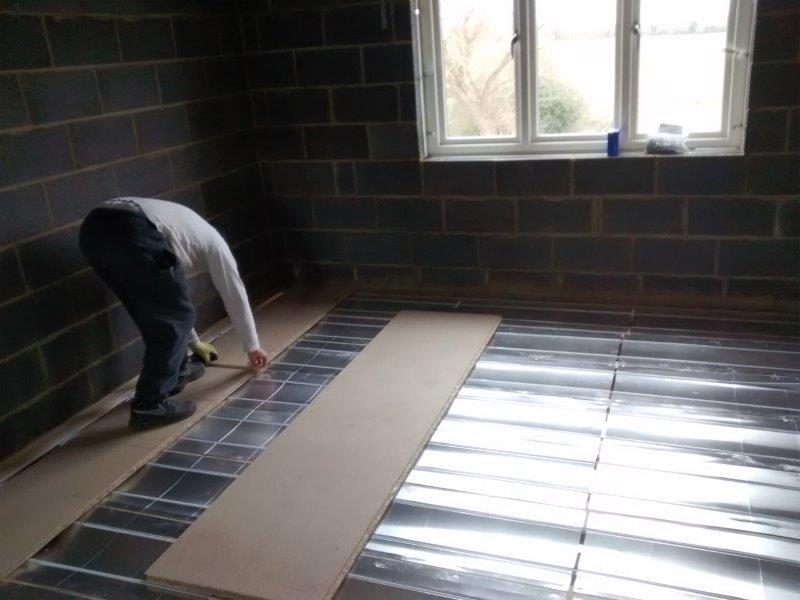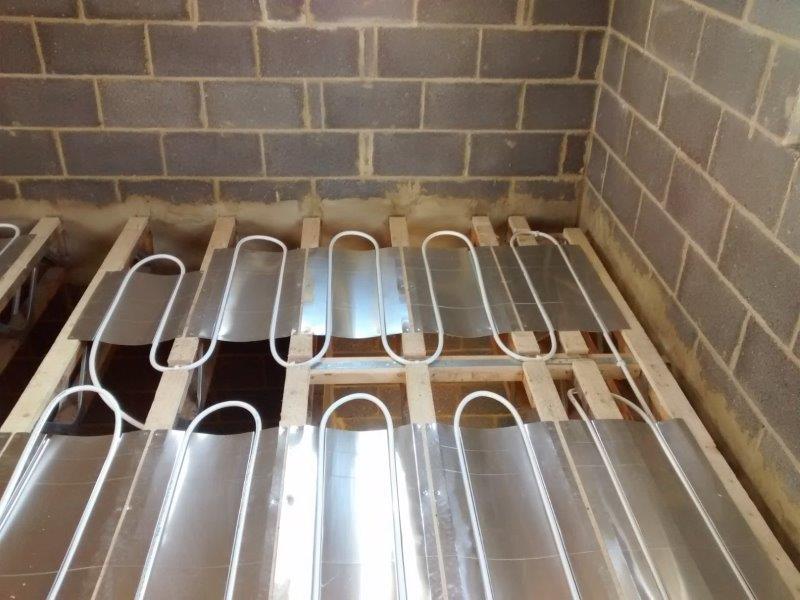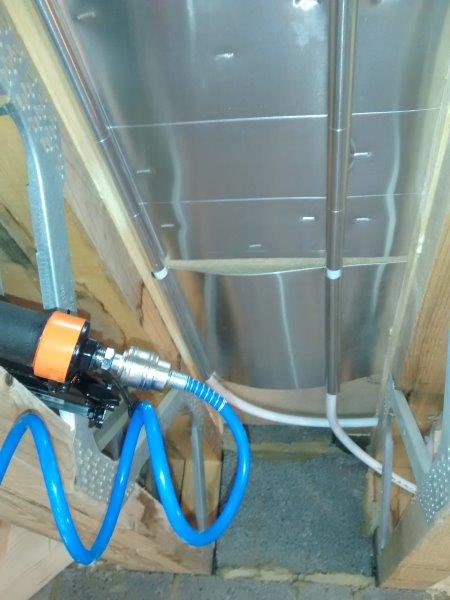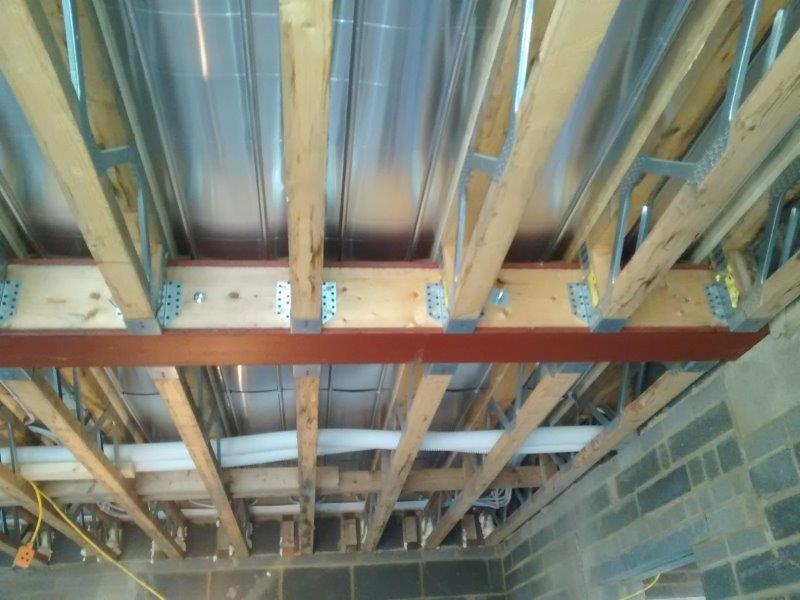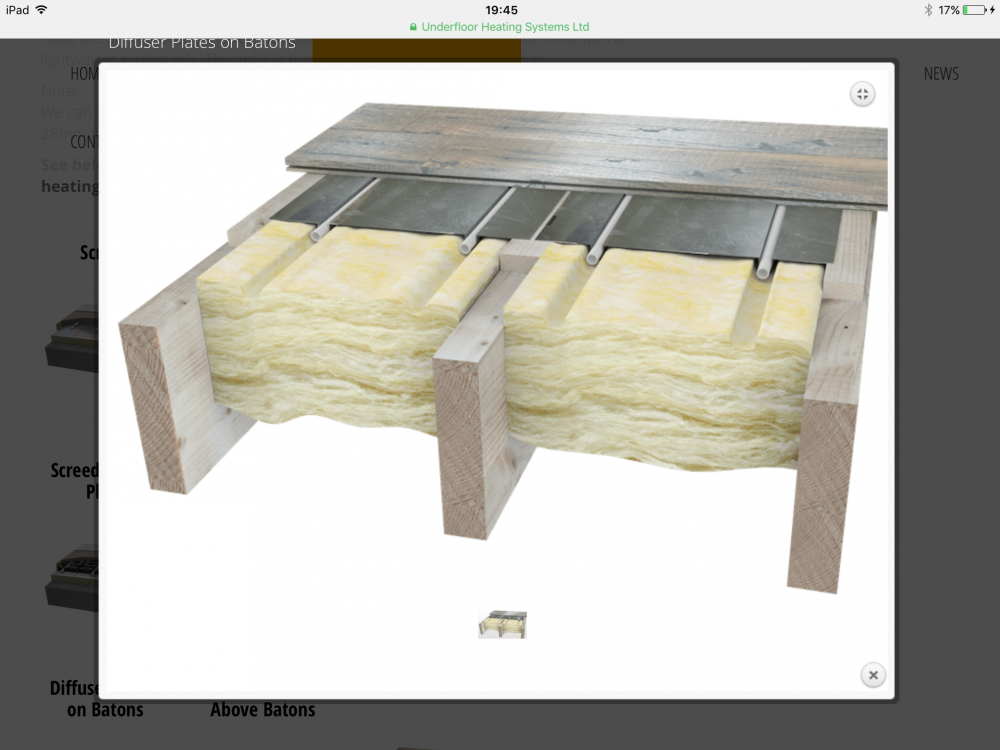Leaderboard
Popular Content
Showing content with the highest reputation on 10/29/16 in all areas
-
I went for the battening the web joist route and got on very well with it. I used a 22mm x 90mm sawn timber (or thereabouts) pasloded and D4 glued on to my webjoists (about 70mm wide), nailed down the spreader plates with some clout nails, threaded in the pipe and then boarded out with 22mm egger chipboard (glued and screwed). Things I learnt as I went - have a decent sized sharpie pen and make notes of where pipes cross over the joists to avoid mindless screwing mistakes, don't weave the the pipe even under one joist (see below) - even on a small ensuite circuit that whole length of pipe then needs to be threaded down that same route. I bought an air stapler (on NickfromWales advice/suggestion) only £20 off Amazon and fixed the spreader plates back to the underside of the flooring (done from below) - having an enthuasiatic 15 year old also helped this job go well Another real benefit that helped a lot (I didn't learn this until I made my way downstairs to do the ground floor) is to use a bending spring on the pipe to help with forming corners and tight bends: http://www.ebay.co.uk/itm/UFH-PROFESSIONAL-UNDERFLOOR-HEATING-AL-PEX-PIPE-SPRING-BENDER-/141260384210?var=&hash=item20e3c667d2:m:mH_qsDtK7756rsBIEu_V3Bw I think I could have lived without a pipe-decoiler, I had 500m coils from Boulder and these were more than it could cope with, just rotating the coil on a clear bit of board seemed to go just as well. This was one of the more rewarding things I did on the build - good luck!3 points
-
As a BCO i would, and have accepted this several times as an acceptable MOE from a bedroom so long as the window is of sufficient size, not more than 1100mm from floor, access is not obstructed by anything permanent in the room and the window supports itself when opened. However, this is a common sense interpretation of the regs and i could not guarantee that another BCO would be of the same opinion, you would definately have to check it out with your inspector first.2 points
-
1 point
-
I'm planning to have no UFH pipes in our "stairs" room. It's central to the house, the manifold will be under the stairs with circuits running to adjacent rooms. In the bathroom the UFH doesn't (eventually won't ) heat the large cupboard area or under where the bath is. Tbh the layout does go a bit "serpentine" where it exits the room.....but NICK says it's alright!1 point
-
Guys! What an idea! We only happen to have 4 Bulk Bags full of Xps offcuts from the icf walls. Do you think that's a goer? Would solve two problems at once and save us a wee bit.1 point
-
I'm late to this thread. My comments: Do NOT bother with an UFH zone in the hall. Our present house, which is nothing special in terms of insulation etc has one, and it NEVER turns on. The hall is in the middle of the house and it only has a tiny wall area at the front to lose heat. It will gain much more heat from the adjacent rooms, so save pipe and effort and forget any UFH circuit in the hall. This will then allow you to space out any pipes that happen to flow via the hall to get to their destination. Same for a landing upstairs, that never turns on either so again do not bother with UFH on a landing upstairs. Don't cram the pipe runs from the manifold all into oner little gap, but space them out evenly across the width of the hall, and evenly where they pass under the stairs. This alone will heat the hall all it needs. The under stairs cupboard will be warm from the manifold, ventilate it to let some of the heat out to the rest of the house.1 point
-
@MikeSharp01 that's the way I read it - 500 people working days or less than 30 days with more than 20 contractors on site. The CDM app is still ideal to create your safety plan - just looking for the PC plan now1 point
-
Just checking but did you need the F10 it only applies if the project will have more than 22 people at any one time or exceed 500 people working days if I recall?1 point
-
These make interesting reading https://www.citb.co.uk/documents/cdm regs/industry-guidance-principal-designer.pdf http://www.citb.co.uk/documents/cdm regs/2015/cdm-2015-principal-contractors-interactive.pdf I've just downloaded the CDM construction plan risk app and it's brilliant ..!! Generated the risk plan in less than 10 minutes...1 point
-
1 point
-
There is a list from the Mortgage council that you can get that lists every single mortgage provider and what warranties they accept. I only found this after a very few frustrating days on the phone to various providers! I'll see if I can google it for you. I'm going to go with C-R-L, I like their personal account manager and flexible approach to non-standard building approaches. Still expensive though!!1 point
-
Never had a BI ask for structure on a stairs, they just walk up it. Built loads mdf window boards work well for straight treads, 28mm mdf for winders, ply for risers, strings straight ones we used large size sawn carcusing planered on one face and one edge. Gorilla glue is good, "rubber blocks" under the noses, all nice and solid, best to build on Fridays.1 point
-
Dip under the top rail of the joist. Not ideal, but if you commission ( purge ) properly you should eradicate any air locks / pockets. Once full of water and treated properly with inhibitor ( X100 / similar quality product ) then it should be fine. Air vents ( automatic ) on both of the manifold rails is essential. .1 point
-
This makes good reading too https://www.aisolutions.co.uk/Community/Knowledge/Topic/11/4/Duties-of-Principal-Contractor This is the whole knowledge base https://www.aisolutions.co.uk/Community/Knowledge/Topic/1001/0/CDM-Knowledge-Base1 point
-
If you really are serious about taking a course then there are a number of options. The three that spring to mind are: At the most basic level you could take the H&S Awareness course: http://www.citb.co.uk/training-courses/health-and-safety-courses/health-and-safety-awareness/ Or you can "tick the box" by going for the IOSH Managing Safely cert: http://www.iosh.co.uk/Training/IOSH-training-courses/Managing-safely-course.aspx Finally the "proper" course for site supervision is the catchy titled SSSTS: http://www.citb.co.uk/training-courses/health-and-safety-courses/site-supervisors-safety-training-scheme/ None of them are hugely expensive or contain content that is "challenging". In fact if you can't get through the content then you should probably reconsider self building as you might die along the way I was going to say "its mainly common sense" but that's a phrase that will cause most H&S professionals to spontaneously combust ! Now the word the H&S pro's really love is "practicable" (Note that's NOT practical!)1 point



